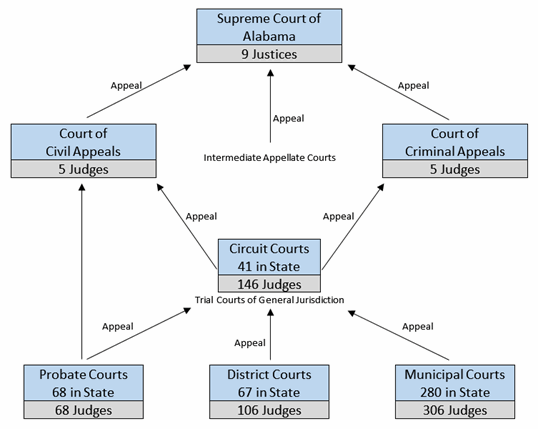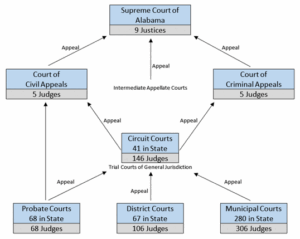
Jason L. Russo, Esq.
Jason L. Russo, a former New York prosecutor with 25 years of experience in criminal law, is a partner at Gaitman & Russo, LLP, a boutique law firm practicing Federal and State criminal defense, criminal appeals, and post-conviction relief. He can be reached directly at 877-707-5659 or at https://www.notguiltyli.com/contact-us/

In today’s New York Criminal Caselaw Roundup we’ll be discussing the latest in developments of New York criminal law, criminal appeals, and post-conviction relief.
Cases that we’ll cover include Level 2 Sex Offender, Rape in the Second Degree, harmless error, right to confrontation, confrontation clause, autopsy report, warrantless search, Payton violation, suppression, consent to search, Molineux evidence, Second Amendment, New York State Rifle and Pistol Association v. Bruen, Miranda, SORA, Fourth Amendment, DNA testing, temporary lawful possession, Penal Law § 265.20(a)(1)(f), Murder in the Second Degree, Manslaughter in the First Degree, verdict against the weight of the evidence, Brady material, Aggravated Vehicular Homicide, Vehicular Manslaughter in the First Degree, Manslaughter in the Second Degree, Driving While Intoxicated, Leaving the Scene of an Accident Without Report, Reckless Driving, Promoting Prison Contraband in the First Degree, Criminal Possession of a Controlled Substance in the Fifth Degree and Promoting Prison Contraband in the Second Degree, Miranda, and more.
The New York Criminal Caselaw Roundup is a blog and video podcast by criminal defense and appeals lawyers Jason L. Russo and Steven J. Gaitman summarizing the latest developments in criminal law, criminal appeals, and post-conviction relief in the State of New York. Each week we digest the latest reversed convictions throughout the New York Appellate Divisions and the New York Court of Appeals, as well as the United States Court of Appeals and the United States Supreme Court.
This is a FREE service designed to give you the cutting edge of developments in New York criminal law, appeals, and post-conviction relief.
Visit us at www.notguiltyli.com
COURT OF APPEALS
CLICK TO READ People v. Anthony Debellis, No. 27
Defendant was stopped driving a friend’s car with an expired registration. When police asked him for license and registration, Defendant had neither on him, but pulled a handgun magazine out of his pocket. The police ordered him out of the car, search it, found a bag with ammunition and a holster, and gave police his brother’s name. A second search of the car was conducted, but nothing more was found. A tow truck was called and Defendant asked if he could get his phone charger out of the car, and appeared to fiddle with the front seat, where police found a gun after a third search. He was charged with Criminal Possession of a Weapon in the Second Degree, Penal Law § 265.03(3).
At trial, during opening statement, the defense attorney argued that wife threw him out of the house because he was broke and not earning any money, so, “in a fit of desperation,” Mr. Debellis took the gun and ammunition for “a perfectly legitimate reason. He was taking that gun and . . . everything else to bring to a local police department . . . to turn it in because he was broke and because he was desperate and because he had an argument with his wife and he was going to turn it in . . . [t]o get a gift card for turning in weapons.”
At trial, both Mr. Debellis and defense counsel admitted that Mr. Debellis had possessed the weapon without a valid license. Mr. Debellis was arrested in November 2016 for misdemeanor violation of the terms of his firearm license, and pled guilty in March 2017, 18 months before his arrest in this case. In addition, Mr. Debellis was subject to an order of protection, dated 14 months before his arrest in this case, that required him to turn in all firearms. Mr. Debellis admitted that he did not do so, instead leaving the weapon in a safe in the home where his wife and children lived. Defendant also testified that that he was taking the gun to surrender it voluntarily pursuant to a gun buyback program.
Defense counsel asked for a jury charge of temporary and lawful possession. The court refused to give that charge to the jury because Mr. Debellis’ possession was not temporary. Mr. Debellis had admitted that he had the gun for over a year after his license was revoked, and temporary and lawful possession requires that the defendant possess the gun “only long enough to dispose of it safely.” Instead, after the trial court refused to charge the jury on temporary and lawful possession, defense counsel apparently aimed his closing argument at jury nullification.
On appeal, Defendant argued that his attorney provided ineffective assistance of counsel by requesting an instruction on temporary and lawful possession rather than the statutory defense of voluntary surrender under Penal Law § 265.20(a)(1)(f). The First Department affirmed.
The Court of Appeals reversed and granted a new trial. Here, counsel knew that his client’s explanation was that he was traveling to turn the gun in to the NYC gun buyback program. Indeed, in his opening statement, counsel admitted to the elements of the crime of criminal possession of a weapon and offered a defense, explaining that Mr. Debellis, in desperate need of money, was transporting the gun to a police buyback program in the Bronx. However, after announcing that line of defense and supporting it through Mr. Debellis’ trial testimony, counsel failed to request the only jury instruction that would give it any legal weight—a defense of voluntary surrender. Counsel premised his case instead on the common-law defense of temporary and lawful possession, which was completely inapplicable given the length of time Mr. Debellis had possessed the weapon in contravention of a preexisting court order that he had to divest himself of all firearms.1 Even after the court explicitly told counsel that that it would not instruct the jury on temporary and lawful possession because it did not fit the evidence, counsel failed to request an instruction on the statutory defense that fit his client’s testimony and counsel’s own argument to the jury.
Reversed, new trial ordered.
CLICK TO READ People v. Donna Jordan, No. 75
A store in Queens was robbed, and an employee found a cellphone on the floor that had been left behind when the robbers fled. Police officers swabbed the phone for DNA, and analysts from the Office of the Chief Medical Examiner (OCME) created a DNA profile from the swab and ran the profile through the Combined DNA Index System (CODIS). After CODIS identified defendant as the source of the DNA based on a preexisting DNA profile stored in the databank, she was arrested and charged with second degree robbery and petit larceny. OCME analysts created a DNA profile from a post-arrest buccal swab sample from Defendant and confirmed the match. At trial, the People called an OCME Level 4 criminalist to testify that Defendant’s DNA profile matched the profile developed from the crime scene swab. Three relevant exhibits were entered into evidence: a forensic biology file containing all paperwork developed by OCME, including a DNA profile generated from the DNA swabbed from the cellphone; a similar forensic biology file that contained a DNA profile generated from the confirmatory swab taken from defendant; and a demonstrative chart used to explain the matches to the jury. Defense counsel objected, arguing that because the witness did not perform any of the DNA testing himself, Defendant’s right to confrontation would be violated by his testimony regarding the DNA profiles. The People responded that the witness had performed an independent analysis of the profiles and so was the proper witness. The Court allowed the testimony and admitted all three exhibits.
After Defendant was convicted, she appealed and the First Department affirmed, finding that the Right to Confrontation was not violated because the analyst performed their own analysis of the DNA profiles.
The Court of Appeals reversed, finding that the record was insufficient to establish that the testifying analyst participated in or directly supervised the final step that generated either of the two DNA profiles.
Reversed, new trial ordered.
CLICK TO READ People v. Lance Rodriguez, No. 78
Defendant was riding his bicycle in Queens when a police car pulled up alongside him and ordered him to stop. Police recovered a gun on his person which was loaded and charged. He moved to suppress, and at the suppression hearing, the police testified that he and another officer were patrolling in an unmarked car when they saw Defendant riding a bike in the middle of the road, holding his left hand over his pants. They then yelled “Police, stop” twice before Defendant stopped riding and pulled over. They then asked him if they had “anything on him,” and Defendant said he did. The police asked the same question again, and Defendant said he had a gun in his waistband. Suppression was denied, and Defendant pled guilty, reserving his right to appeal.
The Second Department affirmed, finding that the police engaged in a common-law inquiry when they stopped Defendant.
The Court of Appeals reversed, and made clear that a stop of a bicyclist is a seizure under both the Federal and State Constitutions just like a stop of a motor vehicle. Because the stop was not justified by reasonable suspicion or probable cause of a traffic violation, the stop was invalid, and the evidence should have been suppressed.
CLICK TO READ People v. Marcus Brown, No. 83
Defendant stole money at gunpoint from his aunt in the presence of his 10-year-old cousin for which he pleaded guilty to, inter alia, the unlawful imprisonment of the child. As a result of his conviction, he was required to register as a sex offender. The Court of Appeals held that under the facts of this case, requiring the Defendant to register as a sex offender violated his Due Process rights and did nothing to further the legislative purpose of SORA to protect the public from actual sex offenders.
CLICK TO READ People v. Ramon Cabrera, No. 65
Two issues are raised in this appeal – (1) whether in light of the United States Supreme Court’s decision in New York State Rifle and Pistol Association v. Bruen, New York’s handgun licensing scheme is constitutional under the Second Amendment, and (2) whether Defendant was in custody for purposes of Miranda when he was handcuffed and questioned by police, and whether his statements should have been suppressed.
The Court of Appeals held that the first issue was not properly preserved for appellate review. As to the second issue, the court granted suppression and reversed.
Defendant was pulled over for speeding in South Carolina and admitted that he had guns in the car and was traveling to his mother’s home in New York. Although the defendant held a Florida license for the guns and was legally permitted to possess them in South Carolina, the officer warned him that possession of the guns would be unlawful in New York, and notified the Bureau of Alcohol, Tobacco, Firearms and Explosives (ATF) about the Defendant and his travel plans. Police then began surveillance on Defendant’s mother’s home, and when he parked in front of her house, police approached him and handcuffed him. When police found his wallet in the front console and saw a Florida Concealed Carry Permit, they asked him if there were guns in the car, and Defendant admitted that there were. The guns were recovered and Defendant was arrested. Defendant was later brought to an interrogation room signed a Miranda card and a consent to search form. Defendant then immediately said he wanted a lawyer and no further questioning occurred.
The Court of Appeals held that Defendant was in custody when he was handcuffed outside of the car, and any responses he gave to questions in the absence of Miranda were illegally obtained. Additionally, the consent to search the vehicle was also illegally obtained.
Reversed and remanded.
CLICK TO READ People v. Sebastian Telfair, No. 62
Two issues are raised in this appeal – (1) whether in light of the United States Supreme Court’s decision in New York State Rifle and Pistol Association v. Bruen, New York’s handgun licensing scheme is constitutional under the Second Amendment, and (2) whether the trial court deprived him of his right to a fair trial in admitting evidence of prior bad acts under People v Molineux, 168 NY 264 (1901) and allowing the prosecutor to make propensity arguments during summation.
The Court of Appeals held that the first issue was not properly preserved for appellate review. As to the second issue, the court reversed and ordered a new trial.
Defendant was stopped after making a U-turn without his headlights on, and police smelled marijuana when they pulled him over, and saw a lit marijuana cigarette on the center console. He was placed under arrest along with his passenger, and police impounded the car and found more marijuana, cash, and several handguns in the vehicle.
The People moved under People v Molineux, 168 NY 264 (1901) to introduce evidence of two prior incidents involving Telfair’s possession of a weapon: a 2006 uncharged crime and a 2007 misdemeanor conviction for weapon possession. The defense objected, arguing that given the temporal remoteness and dissimilarity of the prior incidents, they had “little, if any, probative value” and were highly prejudicial, in part because the 2007 conviction concerned the same charge for which Telfair was now on trial. The trial court admitted the evidence.
At trial, the main issue was whether Defendant knew the guns were in the pickup truck, as they had been legally purchased in and transported from Florida after the truck was packed at his girlfriend’s residence.
The People put on Molineux evidence regarding the two prior incidents in which the defendant previously possessed guns outside of Florida. First, a Massachusetts detective testified that in 2006, while Telfair was a professional basketball player, a flight attendant on the team plane found a .22 caliber pistol in a pillow imprinted with a photograph of Telfair’s baby. The detective determined that the gun was legally owned by the Defendant’s then-girlfriend, Samantha Rodriguez. Telfair told the detective at the time that he had borrowed Rodriguez’s gym bag while packing for his trip and did not realize it contained the pistol; not knowing what to do with the gun once he discovered it after boarding, he placed it inside his pillow. The detective testified that, after inspecting the gym bag and confirming that it contained Rodriguez’s belongings, he accepted the Defendant’s explanation and no criminal charges were filed. Next, a police officer and an assistant district attorney testified regarding the 2007 incident, in which Telfair was stopped for speeding in Westchester County and the officer found a loaded .45 caliber handgun under the passenger seat. According to the assistant district attorney, Telfair’s lawyer proffered that the gun belonged to Rodriguez, and that, as the primary user of the vehicle, she must have left the gun in the car. Telfair and his fiancé pleaded guilty to criminal possession of a weapon in the fourth degree.
In summation, the prosecutor referenced the guns found in the prior incidents, stating that the “defendant claimed I didn’t know, I had them by accident,” and “now here we are again ten years later in 2017 he’s caught again and it’s the same excuse.” The defense objected. During deliberations, the jury sent a note requesting clarity on how the Molineux evidence could be used, which read: “How is the jury allowed to use the evidence from the Westchester and Boston firearm incident for and not allowed to use it for, eg, knowledge or lack of mistake as to what?” Shortly thereafter they returned a guilty verdict.
The Court of Appeals reversed, finding that the purpose of the Molineaux evidence was strictly propensity. Evidence of the 2006 and 2007 incidents was not relevant to whether Telfair knew that the guns in question were in his vehicle in 2017.
Reversed and remanded for a new trial.
CLICK TO READ People v. Tramel Cuencas, No. 84
Well before daybreak, four armed officers knocked repeatedly on the exterior door and window of a two-family residence. Someone responded by coming to the exterior door and opening it. The officers identified themselves as police, the person moved aside, and the officers entered the vestibule. Through the doorway of the downstairs apartment, they saw Defendant, entered that apartment, and arrested him. He was transported to the precinct and interrogated, gave a confession after several hours of questioning, and using that information, police obtained a search warrant for the apartment finding other evidence. After a Payton hearing, the trial court denied the motion to suppress. Defendant was convicted of two counts of Murder in the Second Degree and one count of Robbery in the Second Degree. The Second Department affirmed the conviction on appeal.
The Court of Appeals reversed and granted suppression. The Court held that the warrantless entry into Defendant’s home was not based on consent and the police did not have permission to enter his home. Suppression granted, case remanded.
CLICK TO READ People v. Yoselyn Ortega, No. 74
At issue in this case is whether the admission of two autopsy reports through an expert witness who did not perform the autopsies, as well as that witness’s testimony, violated Defendant’s Sixth Amendment right to confrontation where Defendant had not been given a prior opportunity to cross-examine the performing medical examiner. The Court of Appeals held that the admission of those reports and the expert witness’s testimony violated Defendant’s constitutional right to confrontation, but concluded that the error was nevertheless harmless.
Bad decision.
FIRST DEPARTMENT
No reversals reported.
SECOND DEPARTMENT
CLICK TO READ People v. Benson Godwin, Docket # 2016-06172
Defendant appealed an order which designated him a Level 2 Sex Offender. He pled guilty to Rape in the Second Degree, and at his SORA hearing, challenged the assessment of 20 points under Risk Factor 4 (continuing course of conduct) and 10 points under Rick Factor 12 (acceptance of responsibility), and requested a downward departure. The Second Department reversed, finding that the People failed to establish by clear and convincing evidence that the Defendant engaged in two or more offending acts separated by at least 24 hours, or three or
more such acts occurring over a period of at least two weeks. Additionally, no points should have been assessed under risk factor 12 (acceptance of responsibility), as the People did not establish by clear and convincing evidence that the Defendant failed to accept responsibility for his criminal conduct.
Order reversed, Defendant designated a Level 1 Sex Offender.
THIRD DEPARTMENT
CLICK TO READ People v. Brendan Hoffman, Docket # 112507
Defendant was charged with Aggravated Vehicular Homicide, Vehicular Manslaughter in the First Degree, Manslaughter in the Second Degree, Driving While Intoxicated, Leaving the Scene of an Accident Without Report, and Reckless Driving. The People called an accident reconstruction expert in the Grand Jury who gave testimony regarding the speed Defendant was believed to be traveling at the time of the accident. The prosecutor discovered that the data used by the expert was faulty, and turned over that material to the defense as Brady material. The Indictment was dismissed, and the People re-presented the case using a different expert.
A month before trial, having received no further disclosure regarding any expert analysis of the accident, among other issues, defendant again requested that all expert opinions be turned over. County Court directed the People to produce any documents generated by the State Police regarding reconstruction of the accident. The People responded that one of the State Police accident experts could not locate all his relevant forms.
At trial, the defense called an accident reconstruction expert who opined that the decedent would have had to have been the driver, not the passenger as the People claimed, to have sustained the injuries that caused his death.
After his conviction, the defense conducted an investigation and interviewed the expert who had testified before the first Grand Jury and was the source of the Brady material. That expert provided information that called into question the People’s trial expert’s testimony. Based on this information, the defense filed a 440 motion and ultimately called three witnesses at the 440 hearing that supported his theory that Brady material was withheld.
The Third Department reversed, finding that the Brady material was suppressed and it would have changed the outcome of the case. There was no direct evidence as to who was operating the subject vehicle at the time of the accident, and the evidence to that end was in large part the competing expert testimonies.
New trial ordered.
CLICK TO READ People v. D’Andre Jones, Docket # 113585
Surveillance video depicted a driver exiting a vehicle and shooting the victim. Defendant was ultimately apprehended after a car chase and, in connection with this shooting, he was charged with Murder in the Second Degree and Manslaughter in the First Degree. At trial, the People presented a surveillance video showing a driver wearing a dark-colored top and light colored pants commit the shooting. Police testimony at trial established that after the vehicle was stopped, Defendant exited the front passenger side and two people got out of the rear seats, but no one exited the driver’s side. Defendant was wearing a black hooded sweatshirt and gray camouflage pants. Following a jury trial, defendant was convicted of Manslaughter in the First Degree.
The Third Department reversed, finding that the verdict was against the weight of the evidence because there was no direct evidence that Defendant was the shooter and no forensic evidence linking him to a gun or the shooting. It is true that a sergeant testified that the clothing worn by defendant was consistent with the shooter’s clothes as shown on the video and photographs. His conclusion, however, was based almost entirely on his review of the video and photographs. This evidence, when viewed in a neutral light, does not conclusively show that the shooter’s clothes were the same as the clothes that defendant wore. Indeed, defendant and another occupant of the vehicle both wore hooded sweatshirts identical in color. Although defendant and the other occupant wore slightly different colored pants, they were both camouflage in style. Furthermore, the enhanced photographs depicting the shooter were pixelated, and the shade and color of the pants of the shooter cannot be easily discerned from these photographs. As such, the photographs do little to show that the pants worn by defendant were the same pants worn by the shooter.
Conviction reversed and Indictment dismissed.
CLICK TO READ People v. Ruthann E. Kelly, Docket # 112256
In 2019, defendant went to a correctional facility to visit an incarcerated individual. Upon proceeding through security, a canine alerted to the possible presence of narcotics on Defendant. She was taken to a private room and drugs were found in balloons after she was questioned. She filed a motion to suppress statements and physical evidence, but the motion was denied. She then pled guilty to Promoting Prison Contraband in the First Degree, Criminal Possession of a Controlled Substance in the Fifth Degree and Promoting Prison Contraband in the Second Degree.
The Third Department reversed, finding that Defendant was in custody after she proceeded through several locked doors before being escorted to the private room where she was not free to leave and was questioned. Because no Miranda warnings were issued, the statements should have been suppressed. The plea was vacated and the case remanded.
FOURTH DEPARTMENT
No reversals reported.
GENERAL SEARCH TERMS (TAGS)
Jason Russo, Steve Gaitman, Jason L. Russo, Steven J. Gaitman, Jason Russo, Steve Gaitman attorney, Jason Russo, Steve Gaitman NY Attorney, Long Island Criminal Defense Lawyer, Long Island Criminal Defense Attorney, Suffolk County Criminal Defense Lawyer, Suffolk County Criminal Defense Attorney, Nassau County Criminal Defense Lawyer, Nassau County Criminal Defense Attorney, Gaitman & Russo, LLP, Criminal Defense lawyer, criminal defense attorney, Federal criminal defense lawyer, federal criminal appeal lawyer, New York criminal defense lawyer, New York Criminal Defense Attorney, New York Appeal Lawyer, New York Appeal Lawyers, New York Appeals Lawyer, New York Appeals Lawyers, New York criminal appeal lawyer, New York criminal appeal lawyers, New York criminal appeals lawyer, New York .criminal appeals lawyers, post conviction relief, post conviction relief lawyer, post conviction relief attorney, New York Appeal Attorney, New York Appeal Attorneys, New York Appeals Attorney, New York Appeals Attorneys, New York criminal appeal attorney, New York criminal appeal attorneys, New York criminal appeals attorney, New York criminal appeals attorneys, New York Appellate Lawyer, New York Appellate Lawyers, New York Appellate Lawyer, New York Appellate Lawyers, New York criminal appellate lawyer, New York criminal appellate lawyers, New York criminal appellate lawyer, New York criminal appellate lawyers, post conviction relief, post conviction relief lawyer, post conviction relief attorney, New York Appellate Attorney, New York Appellate Attorneys, New York Appellate Attorney, New York Appellate Attorneys, New York criminal appellate attorney, New York criminal appellate attorneys, New York criminal appellate attorney, New York criminal appellate attorneys,
SPECIFIC SEARCH TERMS (TAGS)
Level 2 Sex Offender, Rape in the Second Degree, harmless error, right to confrontation, confrontation clause, autopsy report, warrantless search, Payton violation, suppression, consent to search, Molineux evidence, Second Amendment, New York State Rifle and Pistol Association v. Bruen, Miranda, SORA, Fourth Amendment, DNA testing, temporary lawful possession, Penal Law § 265.20(a)(1)(f), Murder in the Second Degree, Manslaughter in the First Degree, verdict against the weight of the evidence, Brady material, Aggravated Vehicular Homicide, Vehicular Manslaughter in the First Degree, Manslaughter in the Second Degree, Driving While Intoxicated, Leaving the Scene of an Accident Without Report, Reckless Driving, Promoting Prison Contraband in the First Degree, Criminal Possession of a Controlled Substance in the Fifth Degree and Promoting Prison Contraband in the Second Degree, Miranda

SPONSORED BY GAITMAN & RUSSO, LLP







